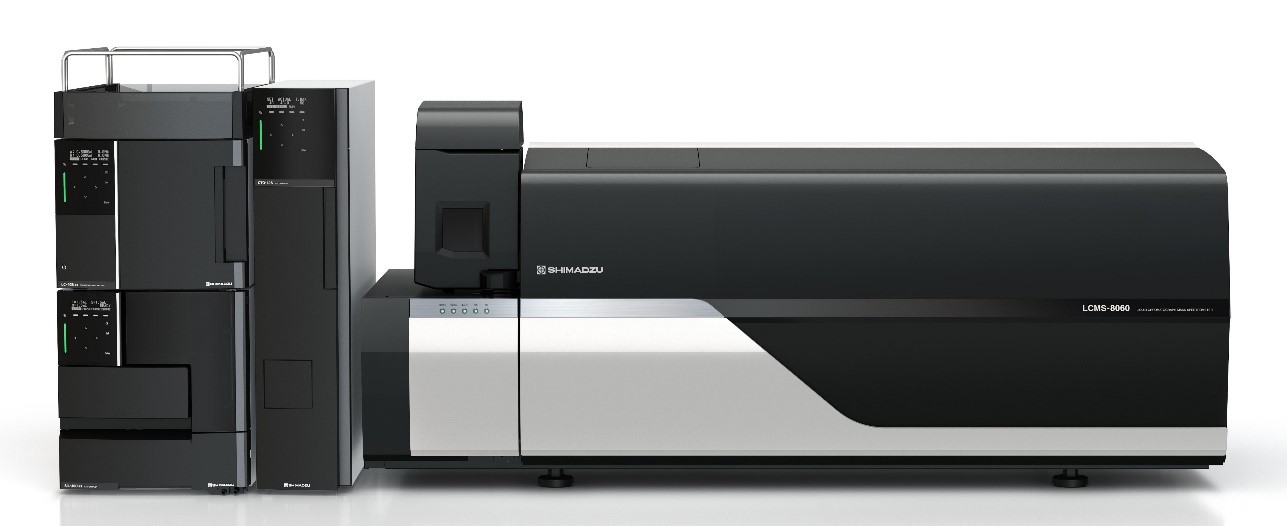About the Corporation
Shimadzu and the Company have developed a new method for evaluating ulcerative colitis: Quantitative evaluation of disease state from blood dye concentration using a liquid chromatography mass spectrometer
A research group led by Professor Hirokazu Fukui of the Department of Gastroenterology Hyogo Medical University (Nishinomiya City, Hyogo Prefecture; President: Keiichiro Suzuki) and Shimadzu Corporation (Kyoto City, Kyoto Prefecture; President: Yasunori Yamamoto; hereafter referred to as Shimadzu) have developed a method for assessing intestinal mucosal permeability, an indicator of the pathology of ulcerative colitis and irritable bowel disease (IBD), using a liquid chromatography-mass spectrometer (LC-MS) (*1) to measure blood concentrations of the dye indigo carmine. This newly developed method not only reduces the burden on patients, but also enables quantitative evaluation of the pathology, potentially contributing to the identification of causes and the development of treatments. The results of this research were developed in the "Disease Omics Analysis Course," Departments of Industry-Academia Collaboration established in 2019 by the university and Shimadzu, and will be presented at the 49th Annual Meeting of the Japanese Society for Medical Mass Spectroscopy (held at Shimadzu headquarters on September 13-14).
Key points of this study
●Our university has concluded a comprehensive joint research agreement with Shimadzu Corporation and is promoting industry-academia collaboration and joint research, of which this research is one example.
The discovery of a method to evaluate intestinal mucosal permeability, which is an indicator of the pathology of ulcerative colitis and irritable bowel disease, is a groundbreaking achievement.
Overview
The number of ulcerative colitis patients in Japan is estimated to be approximately 200,000, and the number of potential irritable bowel syndrome patients in Japan is estimated to be 12 million, or approximately 10% of the population. As symptoms worsen, abdominal pain and frequent bowel movements can disrupt daily life. While the cause is unclear, one possible contributing factor is "leaky gut," which occurs when intestinal barrier dysfunction causes increased intestinal mucosal permeability. Although leaky gut is thought to cause disease by allowing food antigens, enteric bacteria, and their products to enter the body during digestion, there has been no quantitative method for assessing mucosal permeability in living humans, and research into the disease mechanism and pathogenesis has been limited. Until now, the lactulose-mannitol method, which measures the concentration of sugars excreted in urine after oral ingestion, has been the only method used to assess mucosal permeability. However, this method requires a one-day urine collection, placing a significant burden on the subject, and has been associated with issues such as the influence of gastrointestinal motility, diet, and renal function on measured values.
The research group focused on the phenomenon that indigo carmine, used in endoscopic examinations, is excreted in urine after the examination. They developed a method for assessing mucosal permeability using this dye. After spraying indigo carmine during the examination, the researchers assessed its blood concentration in 11 ulcerative colitis patients and five healthy controls to determine its relationship to pathology. A significant difference in concentration was observed between the two groups, suggesting the usefulness of this method. The blood concentration of indigo carmine was measured using Shimadzu's LCMS-8060 liquid chromatograph mass spectrometer. Conventional treatments for ulcerative colitis and irritable bowel syndrome (IBS) have measured treatment efficacy based on subjective symptoms after drug administration. If this new method is put into practical use, it will lead to more efficient treatment with less burden on patients. Hyogo Medical University and Shimadzu Corporation will continue clinical research on this method to establish its clinical significance. Going forward, the university will collaborate with Shimadzu to obtain clinical evidence for this method, aiming to develop research equipment to support drug discovery research and medical equipment for clinical testing.
Glossary
*1 Liquid chromatograph mass spectrometer: An analytical device that connects a liquid chromatograph (LC), which uses a liquid mobile phase, to a mass spectrometer (MS) (see photo below).
reference
Inquiries regarding this matter
■ Research-related inquiries
University Administration Department URA
E-mail: ura-hyogo@hyo-med.ac.jp
■Public Relations Contact
Public Relations Division, General Affairs Department
Phone number: 0798-45-6655
Email: kouhou@hyo-med.ac.jp
